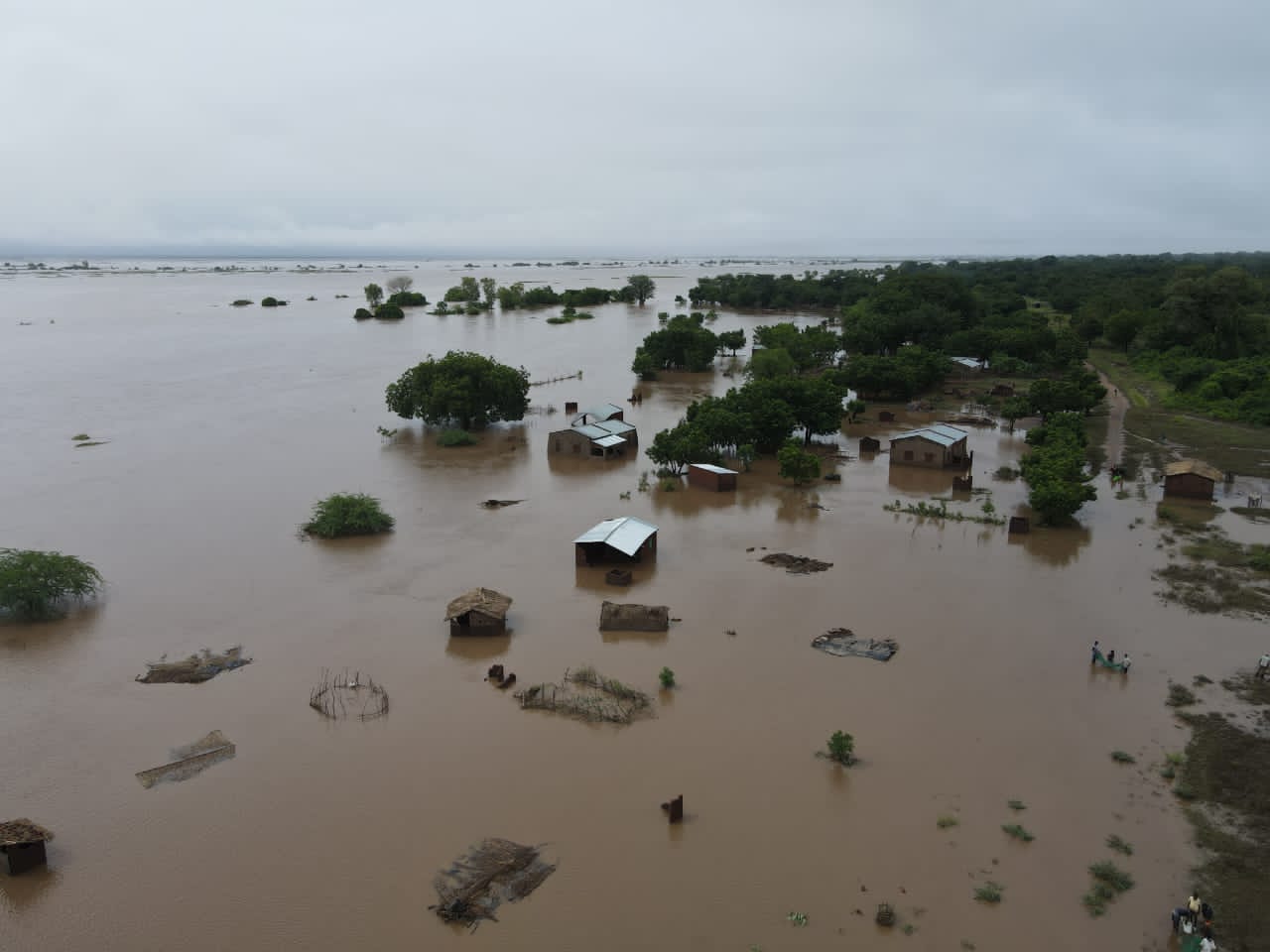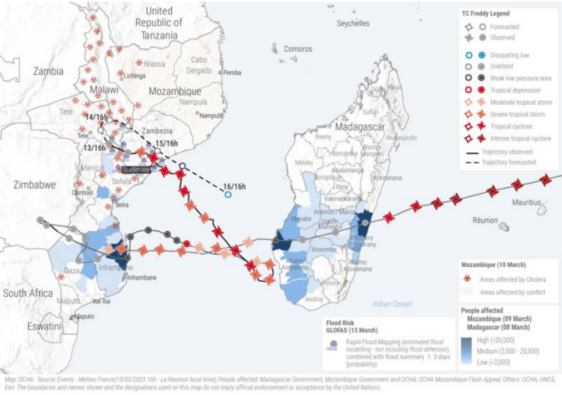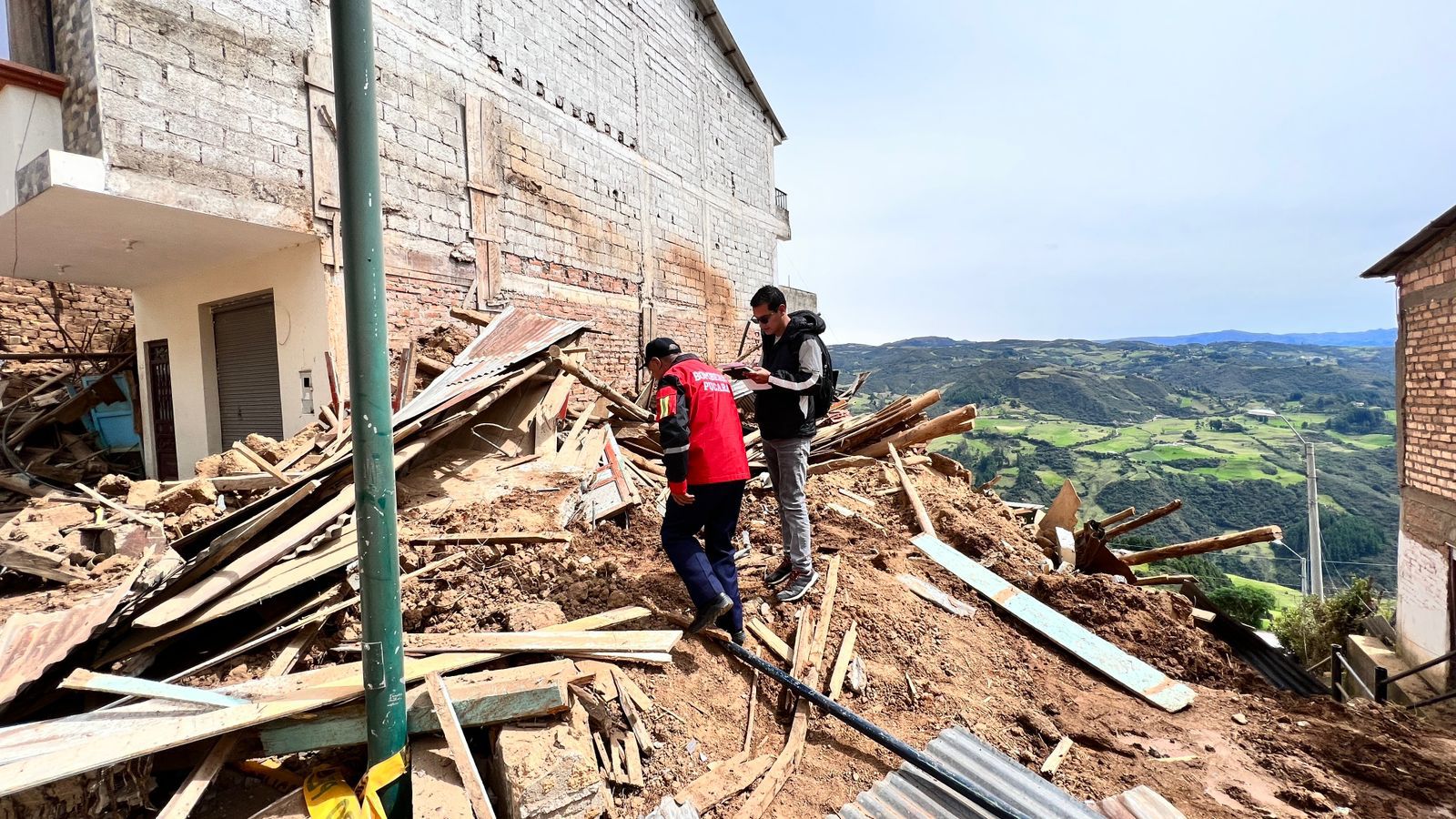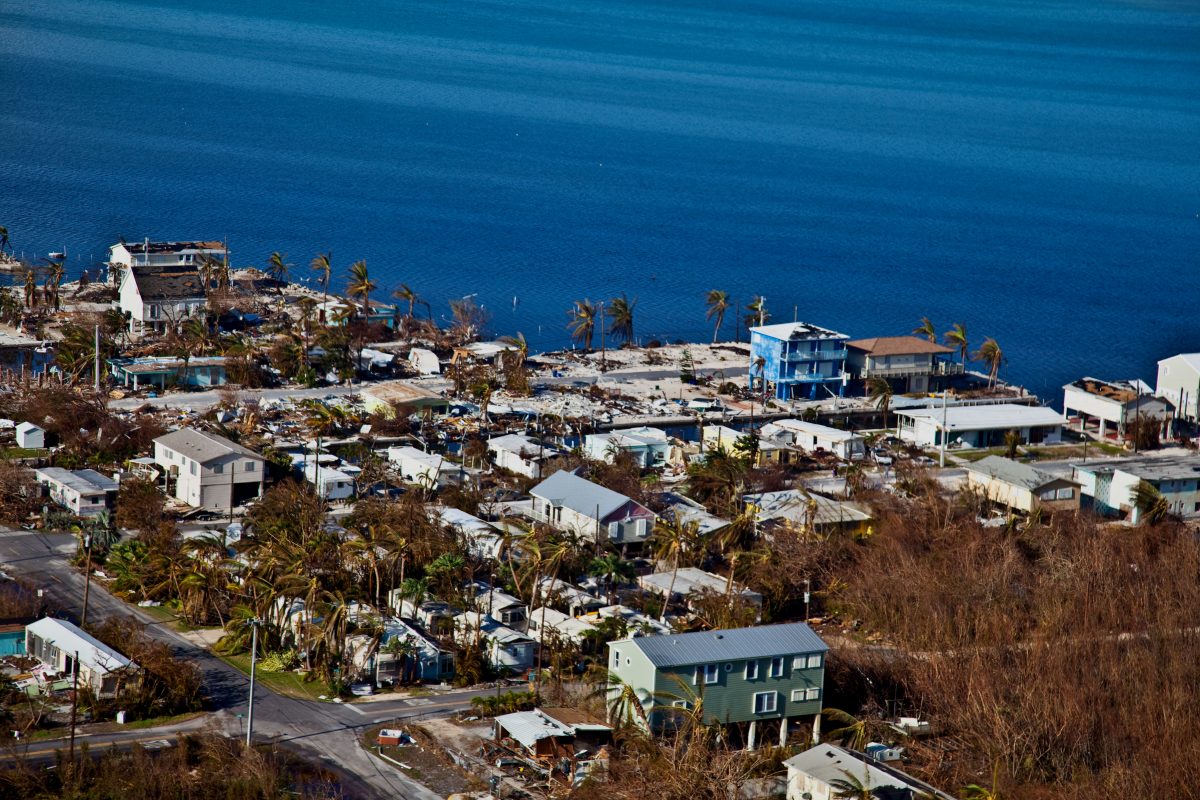
Last updated:
Tropical Cyclone Freddy

Overview
Record-breaking Tropical Cyclone Freddy formed on Feb. 3, 2023, northwest of Australia before traveling across the entire Indian Ocean to become the first Category 5 storm of the Southwest Indian Ocean cyclone season.
According to the National Oceanic and Atmospheric Administration, no tropical cyclones had taken such a path across the Indian Ocean in the past two decades. On March 7, Freddy became the longest-lived tropical cyclone ever recorded and was at that time officially Earth’s most energetic storm ever observed.
Cyclone Freddy made landfall on Madagascar’s eastern coast, near Mananjary, on Feb. 21. Freddy then moved across the Mozambique Channel and made landfall in Mozambique’s Inhambane province on Feb. 24.
Cyclone Freddy made its third landfall in total and its second landfall in Mozambique on March 11 in Zambézia province, with maximum winds of almost 92 miles per hour (148 kilometers per hour). Freddy moved over land as a tropical depression, with a localized center close to the border between Mozambique and the southern tip of Malawi, a landlocked country. Although the system dissipated, it still generated intense rainfall in the interior of Mozambique and southern Malawi.

(Photo: Flooding in Nsanje District, Malawi following Cyclone Freddy, March 16, 2023. Credit: Malawi Red Cross Society)
The government of Malawi declared a state of disaster in 10 southern districts that were hardest hit by the storm. Humanitarian partners supported government-led responses in Madagascar, Malawi and Mozambique. The disaster occurred against the backdrop of a cholera outbreak in Mozambique and Malawi and food insecurity in parts of all three cyclone-affected countries. The humanitarian situation in Mozambique was referred to as a “triple crisis” with the country suffering from the combined effects of the cyclone, flooding and cholera.
Anticipatory action and investments in risk reduction are critical to prevent loss and damage in cyclone-affected countries. A community-based early warning system in Mozambique helped people in the path of Cyclone Freddy take action to protect themselves and their belongings.
Around 1,500 Local Disaster Risk Management and Reduction Committees are established across Mozambique. Made up of volunteer members, the committees serve as a base for the country’s early warning systems. Such investments are one reason the number of people killed and displaced by Cyclone Freddy in Mozambique was lower than comparable cyclones.
Final update: July 2023
Latest Updates

What we’re watching: Weekly disaster update, March 20
Key facts
- Malawi’s president said in April that the country’s death toll had risen to more than 1,000. A mudslide in Malawi’s Cilobwe township in Blantyre district killed at least 85. Mozambique’s death toll was 200 across eight provinces. At least 17 people were killed in the island nation of Madagascar.
- As of March 25, more than 564,000 people in Malawi were displaced by the storm across 577 sites.
- In March, Save the Children reported more than 490,000 children in Malawi were unable to attend school due to damage caused by Cyclone Freddy.
- In Malawi, more than 217,000 children have had their schools damaged, destroyed, used as displacement sites or inaccessible due to flooding. In Mozambique, the cyclone damaged at least 1,017 schools.
- The double landfall Mozambique endured affected over 1.3 million people, with over 184,000 people displaced.
- 2.3 million people were affected in Malawi.
- Nearly 299,000 people were affected in Madagascar, with 226,000 in the southeast and over 72,600 in the southwest.
- 3.8 million people in Malawi were experiencing acute food insecurity, with the key drivers being flooding from Freddy, high food prices and reduced crop production.
- The UN’s Children’s Fund (UNICEF) said in May 2023, at least 573,000 children under five are at risk of suffering from malnutrition in Malawi.
- In Mozambique, rainfall from Freddy reached more than 23 inches (600 millimeters) in some places.
- The World Health Organization (WHO) said that more than 300 health facilities were destroyed or flooded in Madagascar, Malawi and Mozambique.
Food insecurity and agriculture
All three affected countries were experiencing food insecurity prior to Cyclone Freddy, which may be worsened by the disaster.
Communities in Madagascar’s Grand Sud-Est faced increased food insecurity from November 2022 to March 2023. In the Grand Sud region, the situation improved due to a massive increase in humanitarian assistance and relatively good rainfall in 2022 but remained fragile in early 2023.
There was a rise in food insecurity in Mozambique, with an estimated 3.15 million people experiencing severe acute food insecurity as of May 2023. According to UNOCHA, damage to agriculture in Mozambique is a concern “as 92,000 hectares [227,336 acres] of crops have been affected, including in areas where 400,000 people are already food insecure.”
In northern Mozambique, there is only one planting season and the crop destruction means that the lean season will last a year.
According to WFP’s March 2023 Food Price Bulletin for Mozambique: “With prices on the rise, the purchasing power of Mozambicans has been experiencing a downward trend since December 2022. The surge in prices (steep inflation increase) is explained by the effect of the floods on the supply of fresh products and the increase in public transport fares.”
In Malawi, 3.8 million people in Malawi were experiencing acute food insecurity due to the impact of flooding caused by Freddy and the ongoing economic crisis reflected in high food prices. The WFP said the highest reported impact was in Malawi’s agriculture sector, where a total of 2,267,458 people (51% women) lost their crops and livestock as the cyclone destroyed more than 442,000 acres (179,223 hectares) of land.
The UN’s Children’s Fund warned on May 19 that at least 573,000 children under five were at risk of suffering from malnutrition in Malawi. Reports from Malawi’s Department of Disaster Management Affairs and inter-agency post-disaster assessment show that Freddy’s impacts have placed many children, pregnant women and lactating mothers at risk of malnutrition in southern parts of the country.
The combined impact of the three cyclones left 60%-90% of farming areas in Madagascar’s southeast badly damaged and food crops largely destroyed. The significant damage to crops, arable land and livestock in Madagascar has resulted in the loss of livelihoods and has worsened food insecurity. At least 1.35 million people in Madagascar were expected to face high acute food insecurity (IPC Phase 3 or worse) during the peak of the lean season (February to May 2023).
Health
The convergence of multiple crises compounded a severe humanitarian situation, especially in Mozambique and Malawi. In Mozambique, the disaster affected at least 123 health facilities. The WHO reported that more than 300 health facilities were destroyed or flooded in Madagascar, Malawi and Mozambique.
Cholera was a serious concern in Malawi as the country endured its largest outbreak in 2022. The WHO said as of May 28, across their African Region, Malawi accounts for 30% (58,785) of the total cholera cases and 48% (1,760) of all deaths reported. According to UNICEF, as of June 30, the cumulative number of cholera cases in Malawi since the outbreak began in February 2022 was 58,912, with 1,763 deaths.
A cholera vaccination campaign in Malawi reached 1.2 million people, but only one-third of the required health and water, sanitation and hygiene supplies were available. Cholera hit hard the approximately 31,000 pregnant women that were affected by the disaster. Cholera cases were reported in Mozambique as well. UNICEF reported that through June 2023, the cholera outbreak affected 33,076 people in Mozambique, causing the death of 141 people. Sixty percent of cases were in Zambezia and Sofala Provinces.
According to UNOCHA in their Malawi Cyclone Flash Update on March 31, “the inability to adhere to antiretroviral therapy for people living with HIV, risk of malnutrition, opportunistic infection and disease outbreaks may lead to an increase morbidity and mortality in the aftermath of the storm, according to the Ministry of Health.”
In Madagascar’s Grand Sud-Est, the passage of Freddy in the Vatovavy region left 23 health centers roofless, and affected health access for about 117,000 people, including 56,500 pregnant and lactating women, children under 5, and people with disabilities.
Housing
In Mozambique, damage assessments revealed the floods completely or partially destroyed 146,071 houses. Approximately 103,244 houses were located in Zambezia province.
In Malawi, the heavy rains and floods caused significant damage and losses to social services, followed by the productive and infrastructure sectors. However, the disaster impact was highest in the housing sector, with about 260,681 houses damaged or destroyed.
Infrastructure
According to Malawi’s DoDMA in their March 15 Situation Report, “Public infrastructure such as schools, health facilities, and district and main roads have been damaged in all affected districts.”
In Mozambique, the cyclone damaged over 1,000 schools and more than 3,100 miles (5,000 kilometers) of roads.
The Madagascar Red Cross said the cyclone damaged or destroyed many public and private buildings. Yet, according to UNOCHA, while buildings were flooded in the cities of Morombe and Toliara, the impact of the storm was less than expected in Madagascar, and there was little visible wind damage in the villages along the western coast.
The Water, Sanitation and Hygiene (WASH) Cluster in Malawi said on March 29, “Water supply infrastructure and Sanitary facilities have been washed away. In some areas that flooded, boreholes have been submerged under water and the quality of water has been compromised.”
Cash assistance
As with most disasters and emergencies, cash donations are recommended by disaster experts as they allow for on-the-ground agencies to direct funds to the most significant area of need, support economic recovery and ensure donation management does not detract from disaster recovery needs and quickly re-establishing access to basic needs.
The Center for Disaster Philanthropy recommends cash both as a donation method and a recovery strategy. Direct cash assistance can allow families to purchase items and services that address their multiple needs. It gives each family flexibility and choice, ensuring that support is relevant and timely. Cash-based approaches to disaster recovery also give people the freedom to choose how they rebuild their lives and provide a pathway to economic empowerment.
Food assistance
The Food and Agriculture Organization of the UN and WFP recommendations for Malawi included scaling up preparedness and operational efforts “in support of farmers at risk of future flooding, through cash distribution and pre‑positioned inputs such as phytosanitary products for crop protection and tools.”
According to UNOCHA, flooding in Mozambique affected crops that were ready to be harvested, impacting food security and people’s main source of income. Save the Children appealed to donors 100 days after the disaster to support farmers in Malawi and Madagascar, demonstrating the need for long-term recovery in the sector.
According to FEWS NET, Malawi was expected to experience Crisis (IPC Phase 3) outcomes across most southern districts through January 2024. Food assistance, livelihood support and investment in agriculture producers are needed to address food insecurity.
Health
Given the widespread damage to health facilities in the affected countries, restoring access to healthcare for affected people is an ongoing recovery need, as well as replacing medical equipment and supplies lost in the disaster.
To mitigate the spread of the persistent and ongoing cholera outbreaks, increased treatment and access to clean water and sanitation are critical.
In Madagascar’s Flash Appeal, revised in March 2023, and designed to describe recovery needs through December 2023, objective 1.2 is to “provide essential health services, including maternal care for the most vulnerable households, and surveillance of diseases requiring medical attention.”
Housing
The large-scale destruction of the housing stock will require ongoing investments in housing repairs and reconstruction.
The Global Shelter Cluster’s website contains resources to support long-term recovery, including a guide for improving the resistance of traditional dwellings to cyclones in Madagascar.
Contact CDP
Recovery updates
If you are a responding NGO or a donor, please send updates on how you are working in this crisis to Tanya Gulliver-Garcia.
(Photo: Damage caused by Cyclone Freddy in Malawi, March 13, 2023. Credit: Malawi Red Cross Society)
Donor recommendations
If you are a donor looking for recommendations on how to help with disaster recovery, please email Regine A. Webster.
We welcome the republication of our content. Please credit the Center for Disaster Philanthropy.
Philanthropic and government support
The Center for Disaster Philanthropy (CDP) has supported recovery from various cyclone disaster events. For example, in partnership with Google, CDP awarded $50,000 to Habitat for Humanity International to enable the self-recovery of the affected families that have not received any assistance in response to Tropical Cyclone Seroja.
Humanitarian partners supported the government-led responses to Tropical Cyclone Freddy in Madagascar, Malawi and Mozambique. Noteworthy plans, appeals and assessments included the following:
- Malawi 2023 Tropical Cyclone Freddy Post-Disaster Needs Assessment (April 2023)
- Malawi Tropical Cyclone Freddy, Emergency Response Plan – Office of The President and Cabinet Department Of Disaster Management Affairs (March, 2023)
- Malawi Cholera & Floods Flash Appeal 2023 (Revised in March following Cyclone Freddy) (February – June 2023)
- Mozambique Response Plan: Cyclone Freddy, Floods & Cholera (March – September 2023)
- Flash Appeal: Madagascar – Grand Sud and Grand-Sud-est, January – December 2023 (Revised in March 2023)
In Malawi, humanitarian partners were working closely with the Emergency Operations Centre in Blantyre to coordinate the response. Relief items were stockpiled in Blantyre ahead of the storm’s arrival. Government-led search and rescue operations took place in Blantyre, Chikwawa, Mulanje, Nsanje, Phalombe and Zomba districts. President Lazarus Chakwera of Malawi appealed to the international community to send urgent help.
Officials from Mozambique’s National Institute for Disaster Risk Management deployed to the most at-risk provinces. Additionally, Emergency Operational Centers were activated in Manica, Nampula, Niassa, Sofala, Tete and Zambezia provinces.
Donor governments around the world provided support for humanitarian assistance, including Canada, Ireland, the Republic of Korea, the United Kingdom, the U.S. through the U.S. Agency for International Development and Norway.
The European Union, with support from the United Nations Capital Development Fund, funded the Improving Local Climate Resilience in Mozambique Program. Some residents avoided physical harm from Freddy thanks to a community-based early warning system that informed residents to seek shelter at schools, one of the resilient infrastructures delivered by the program.
On March 23, the World Bank approved a $145 million project “to improve water supply and sanitation services and enhance the operational and financial efficiency of the Blantyre [Malawi] Water Board.” In May, the World Bank made another $150 million available under a Contingent Emergency Response Component “to boost the Government of Mozambique’s early recovery efforts in the aftermath of Tropical Cyclone Freddy.”
More ways to help
CDP has also created a list of suggestions for foundations to consider related to disaster giving. These include:
- Prioritize investments in local organizations: Local humanitarian leaders and organizations play a vital role in providing immediate relief and setting the course for long-term equitable recovery in communities after a disaster or crisis. However, these leaders and organizations are mostly under-resourced and underfunded. Grant to locally-led entities as much as possible. When granting to trusted international partners with deep roots in targeted countries, more consideration should be given to those that empower local and national stakeholders.
- Take the long view: Recovery will take a long time and while recovery efforts can begin immediately, funding will be needed throughout.
- All funders are disaster philanthropists: Even if your organization does not work in a particular geographic area or fund immediate relief efforts, you can look for ways to tie disaster funding into your existing mission to support long-term recovery. If you focus on education, health, children or vulnerable populations, disasters present prime opportunities for funding these target populations or thematic areas.
- Ask the experts: If you are considering supporting an organization that is positioned to work in an affected area, do some research. CDP and InterAction can provide resources and guidance about organizations working in affected communities.
Fund resources

Hurricanes, Typhoons and Cyclones
Hurricanes, also called typhoons or cyclones, bring a triple threat: high winds, floods and possible tornadoes. But there’s another “triple” in play: they’re getting stronger, affecting larger stretches of coastline and more Americans are moving into hurricane-prone areas.

Resilience
The Latin root of “resilience” means to bounce back, but every field has its own definition and most individuals within each discipline will define it differently. Learn more.

Disaster Phases
Disasters affect millions of people and cause billions of dollars in damage globally each year. To help understand and manage disasters, practitioners, academics and government agencies frame disasters in phases.